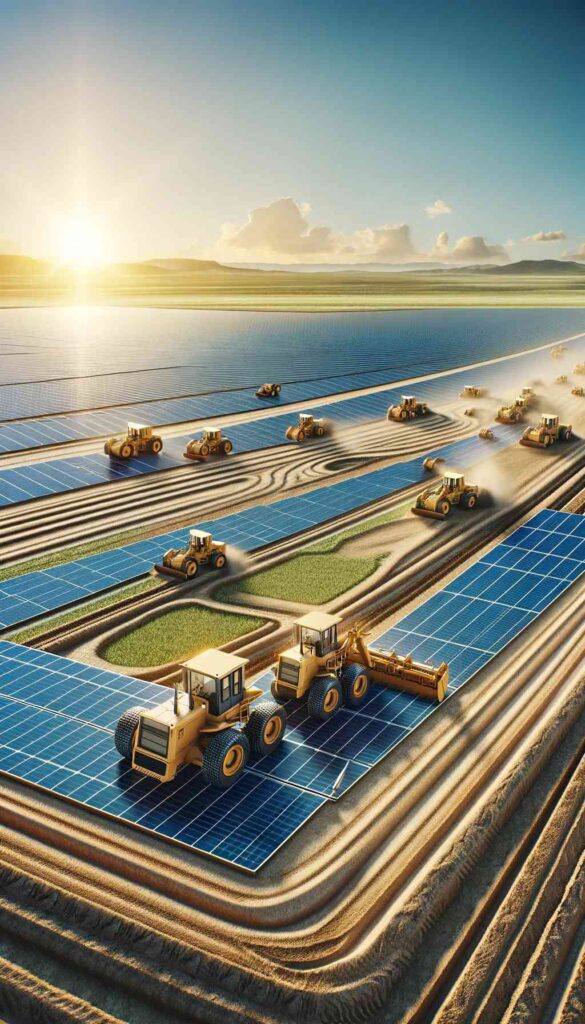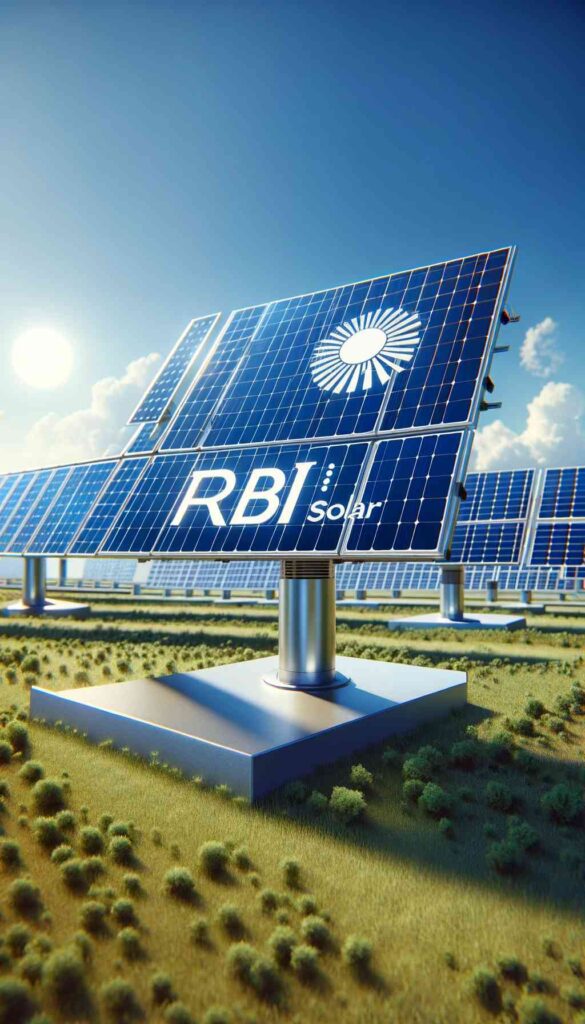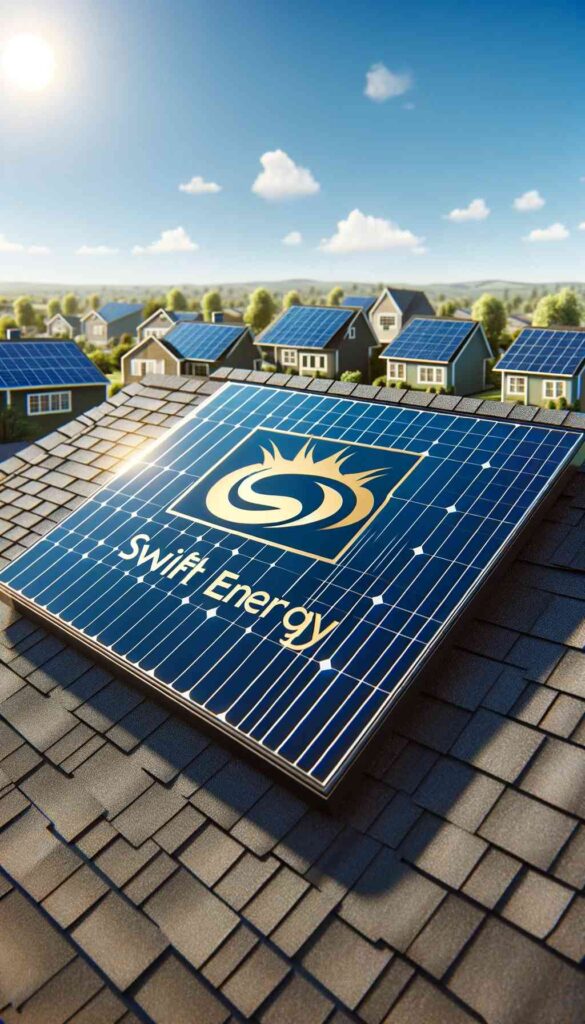Imagine this; you’ve decided to make the leap into the world of renewable energy. You’re all set to go green and venture into solar power. But wait! Before you install those shiny new solar panels, we need to chat about something that’s often overlooked in all the excitement: site grading. Yeah, it might seem a little mundane compared to glorious sunbeams turning into electricity, but stay with me here. It’s just as fascinating, trust me.
Understanding Solar Site Grading
You know when you’re setting up your dream house; every brick, every paint stroke, every piece of furniture matters? Similarly, we cannot just plop down solar panels anywhere. They need a perfect home too! That’s where solar site grading comes into play. It’s like ensuring your solar panels are not just shoved in a closet but have their own private balcony! So essentially, site grading refers to the act of adjusting the landscape for optimal solar panel performance. Still with me? Awesome! But how important is it really?
Importance of Site Grading for Solar Installations
Rings a bit dramatic but bear with me – The success or failure of your solar power system hinges on precise site grading. Sorta like Goldilocks wanting her porridge ‘just right,’ your solar site needs to be graded – you guessed it – ‘just right.’ Too much shading can leave your solar panels hungry for sunlight. Too steep a slope might make installation a nightmare. And you don’t want your solar panel chowing down on dust and dirt instead of sunlight, right? So it’s pretty clear that we cannot neglect the importance of site grading.
Understanding the Sunlight Path and Site-Choice Relationship
Moving on to our real star of the show – the Sun! The path of this celestial spotlight plays a crucial role in determining successful solar site grading. Just like you wouldn’t set up a movie projector to flash onto the side of your popcorn container (silly, right?), similarly, you wouldn’t install solar panels where they can’t catch the sun’s rays effectively. So, understanding where Mr. Sunshine likes to hang out throughout the day would aid in choosing an ideal site for your solar installations.
Performing Initial Site Review: What to Look For
This is like house-hunting for your solar panels. When you’re house hunting, you inspect everything from location to architectural style to neighborhood safety. Same goes for your solar panel home. The initial site review involves evaluating factors such as the site’s topography, orientation towards the sun, existing vegetation levels (nobody likes overgrown bushes), and potential shading structures. Amazingly enough, even seemingly small things like local wildlife and soil type play a role.
Environmental Constraints and Considerations
In our journey towards green energy, we definitely don’t want to step on Mother Nature’s toes! A great tip is identifying any environmental constraints before we start swinging that shovel around. Like checking if your prospective site is on protected land or hosts endangered species – Definitely not a spot we want our solar panels occupying.Importantly, local laws and ordinances related to water drainage or tree preservation must be considered as well.
Choosing the Correct Solar Panel Types for Your Terrain
Lastly, remember like every good superhero, every solar panel has its strengths and weaknesses. Some work better on flat terrains, while others are more suited to sloped lands. Choosing the correct type of solar panel for your terrain maximizes efficiency and saves you money in the long run. Think about it like matching your hiking boots to the trail you’re headed to; stilettos for mountain climbing; not such a good idea, right?
Evaluating Topographical Conditions: Soil Analysis & Wind Patterns
Alright, before we go on with the grading party, let’s dive a little deeper into the science behind it. Ever wondered why builders check the land before constructing a home? Much like building any structure, solar site grading requires a bit of homework too. This includes understanding and analyzing soil conditions and even wind patterns. Yes, you heard it right! While the soil holds your solar installation steady (kind of like an overly protective friend), where and how strong the wind blows might affect balance too!
Importance of Solar Access and Shading Analysis
Looking from down here, the sun seems to follow its own simple path across the sky every day, right? Well, it’s our job to catch those rays most efficiently. So how do we ensure that? This happens by examining when and where shadows fall on our site – we call this a shading analysis. It’s just like scouting out the best outdoor spot for a picnic where there’s just the right mix of sun and shade. Too shady? Not good for our tan – or rather our solar panels!
Determining Optimal Placement and Array Layout
After catching up with shadow games, let’s chat about positioning – just because your cousin Jimmy has his panels angled one way doesn’t mean you have to follow suit – One size doesn’t fit all for hats and neither for solar panel placement. Depending on your particular location and site features, placement can significantly determine energy production; think maximizing sunlight exposure and minimizing shadows and dirt.
Incorporating Microclimatic Factors into your solar site design
You know how it’s mysteriously raining in one part of town but totally dry elsewhere? Well, similar microclimatic factors affect your solar grading site too. Factors such as temperature, precipitation, even little things like frost dates can impact our solar installation site. So, it’s definitely worth taking these tiny but mighty details into account while designing your solar site.
Step-by-step Guide to the Grading Process
Now that we’ve prepped enough, let’s get down to the nitty-gritty of the grading process. Remember how you learnt to bake by following that recipe step-by-step? Turns out you can do grading following a similar process too! From marking the area to leveling and adjusting the slope for our panels, we’d efficiently transform our site one step at a time.
The use of Heavy Machinery in Solar Site Grading
If you thought solar installations only involved delicate electrical components and shiny panels, think again! We also get to play with some big toys – heavy machinery. Though not a Transformers movie plot, it does involve moving large amounts of soil around using heavy-duty machinery like bulldozers or excavators. An adult’s sandbox, wouldn’t you agree?
Understanding Cut-and-Fill Operations
Last but certainly not least, are cut-and-fill operations. This schmancy term refers to removing soil from one place (the ‘cut’) and using it elsewhere (the ‘fill’). Kind of like how you’d scoop sand from one part of your sandcastle base to create an impressive spire elsewhere! Done right, this operation reduces soil wastage and might save you from needing extra soil deliveries!
Post-grading Stabilization and Landscaping Measures
Hooray! We’ve completed our grading project successfully, but hold on; we’re not quite done yet. Just as you wouldn’t leave a construction site filled with debris after building a house, the same goes for our solar site too. Post-grading stabilization involves measures like planting ground cover or installing erosion control devices to ensure the soil stays put – Nobody wants a muddy mess during the first rain!
Tips to Minimize Erosion after grading
Speaking of mudslides – ever noticed how water always seems to find its way? After grading, the exposed site is definitely more prone to erosion – That’s when water plays naughty and tries to wash away our soil! A useful tip here – we can take steps like appropriately diverting runoff or establishing vegetation to make sure the soil sticks around.
What are the differences between Solar Site Grading and Line-Side Tap Solar installations?
Solar Site Grading involves preparing the land for solar panel installation, ensuring proper elevation and grading for maximum energy production. On the other hand, lineside tap solar basics involve connecting the solar system directly to the utility grid at the point of generation, optimizing energy distribution and efficiency.
Safety Guidelines for executing a solar site grading project
With all this talk about heavy machinery and moving tons of soil, we must underline the importance of safety. Remember how mom always told us safety comes first? It’s no different here! We’ll talk about protective gears, safe operation guidelines of any equipment we use, as well as general tips like keeping your worksite clean. Because trust me, nobody likes working in a risky environment!
Common Mistakes in Solar Site Grading & How To Avoid Them
Like any new endeavor, making mistakes with solar site grading isn’t unusual. Overlooking shading areas, neglecting local regulations or maybe even improper handling of machinery – these trips are totally avoidable once you know them. This section will act like your friendly neighborhood guide warning you about those pesky potholes in your way!
Environment-friendly practices in Solar Site grading
As we aim towards a sustainable energy future, it’s essential to minimize the environmental impact while grading the site. This can mean optimizing our cut-and-fill to reduce soil waste, managing runoff properly so as not to disturb the local waterways or even just reusing and recycling materials whenever possible. Remember, every little green act counts!
Future Trends in Solar Installations with respect to site Grading
Finally, behold our crystal ball! As technology advances and we become more efficient with solar installations, exciting trends are emerging. We might see more advanced machinery cutting down installation times or perhaps sustainable materials will replace our current ones. Who knows? But one thing is certain: The future of solar is bright!
Conclusion
And there you have it! I hope this friendly guide was able to shine some light on the enchanting world of solar site grading for you. For such an overlooked aspect, it surely packs a punch in terms of impact, doesn’t it? Remember to keep this guide handy during your next solar installation project and ensure your leap into renewable energy is a confident and educated one. Till then – may the sun be with you!


